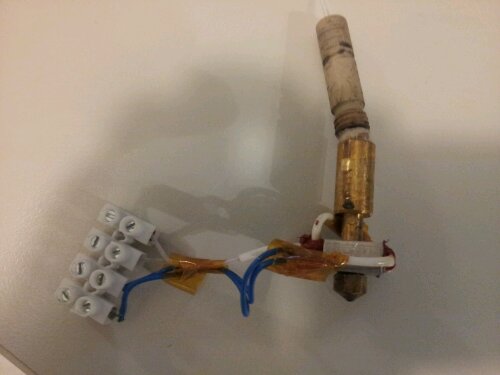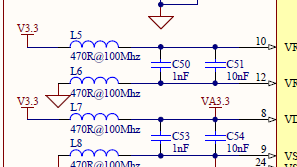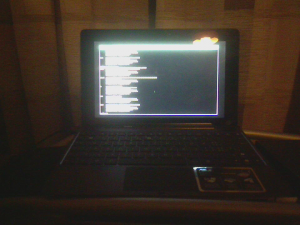In our CCCZH laboratory we are using the R2C2-Electronics from BitBox now.
The hotend is made by Wolfgang from reprap-fab.org.
First run. Uh! Oh! It’s smoking.
We had to drill and poke the PLA out of the PEEK.
What had happened?
Well. Math happened 🙂
http://ftp.o2s.ch/RepRap_BitBox_Wolfgang/calculus2.html
The Bitboxers obviously dimensioned their serial resistor for another thermistor.
Wolfgang is using the B57560G104F in his hotend.
So with a 10kΩ resistor in series the voltage on the ADC will look like that:

While basically it should look like that (with R1=500Ω):

Or in short: Let’s get the soldering iron again >.<
The C-Code will then look like that:
/* {ADC value Extruder0, ADC value HeatedBed0, temperature} */
uint16_t temptable[NUMTEMPS][3] = {
{950, 60, 300},
{1552, 95, 248},
{1891, 119, 226},
{2380, 215, 198},
{2653, 293, 183},
{3006, 447, 163},
{3294, 641, 145},
{3488, 865, 131},
{3765, 1408, 105},
{3901, 1906, 86},
{3999, 2732, 64},
{4053, 3352, 42},
{4077, 3755, 22},
{4089, 4085, 0}
};





